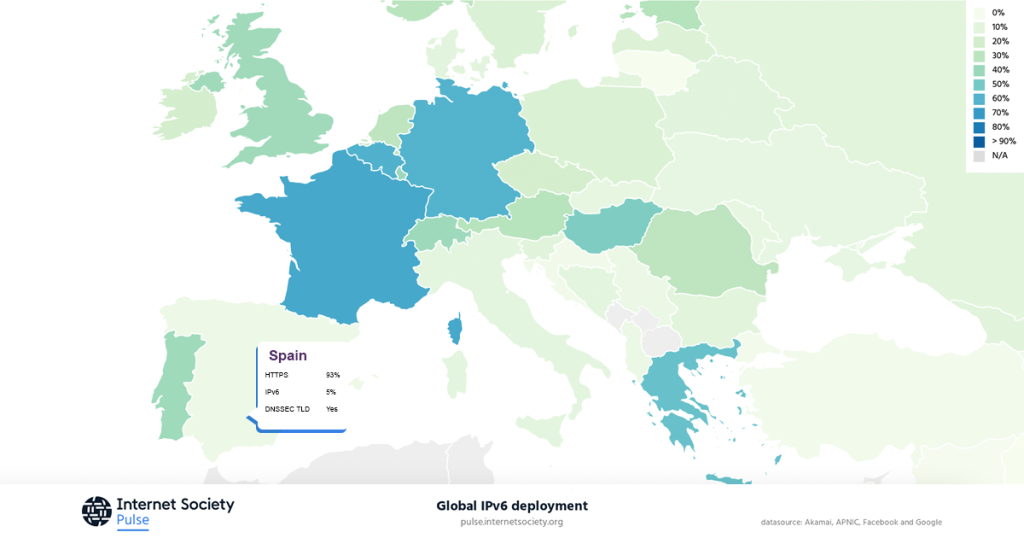Spanish Internet provider Telefónica recently announced it has completed deploying Internet Protocol version 6 (IPv6) for all Movistar and O2 mobile network customers in Spain. Rolling out the technology upgrade started in November 2022. The Spanish network operator also claimed it will deploy IPv6 to all fixed broadband connections by the end of the year.
Spain has been one of the outliers in terms of IPv6 deployment in Europe for many years. Compared with neighboring countries like France (66%) and Portugal (40%), measurements of IPv6 adoption in Spain have shown very little deployment with overall figures languishing below 5% (Figure 1). Telefónica is the largest Internet provider in Spain so we can expect national IPv6 deployment measurements to show a steep rise very soon.

Performance is Key
Given Spanish network operators seem reluctant to deploy IPv6, Pulse was interested to understand what is driving the upgrade now.
It’s pretty clear that improved performance to major sources of Internet content is the key. As the Internet grows to new users and new uses, network operators that don’t deploy IPv6 are forced to share Internet addresses across multiple subscribers. You can read this document to learn more about the issues that this address sharing gives rise to.
The main improvement that [IPv6] introduces is the speed of access to the large providers that publish their content in this protocol, since the usual intermediate address translation steps in IPv4 are eliminated.
In addition, IPv6 simplifies addressing and network architecture, enabling stronger security and greater scalability for applications that are delivered through cloud microservices, rather than in large, single blocks.
VIA Zona Movilidad
Assuming levels of IPv6 adoption in Spain start to approach and maybe even overtake the European average, Italy (10%) will come into focus as the biggest European economy to be lagging significantly behind (the efforts of Sky Italia notwithstanding).
Photo by Kadir Celep on Unsplash


